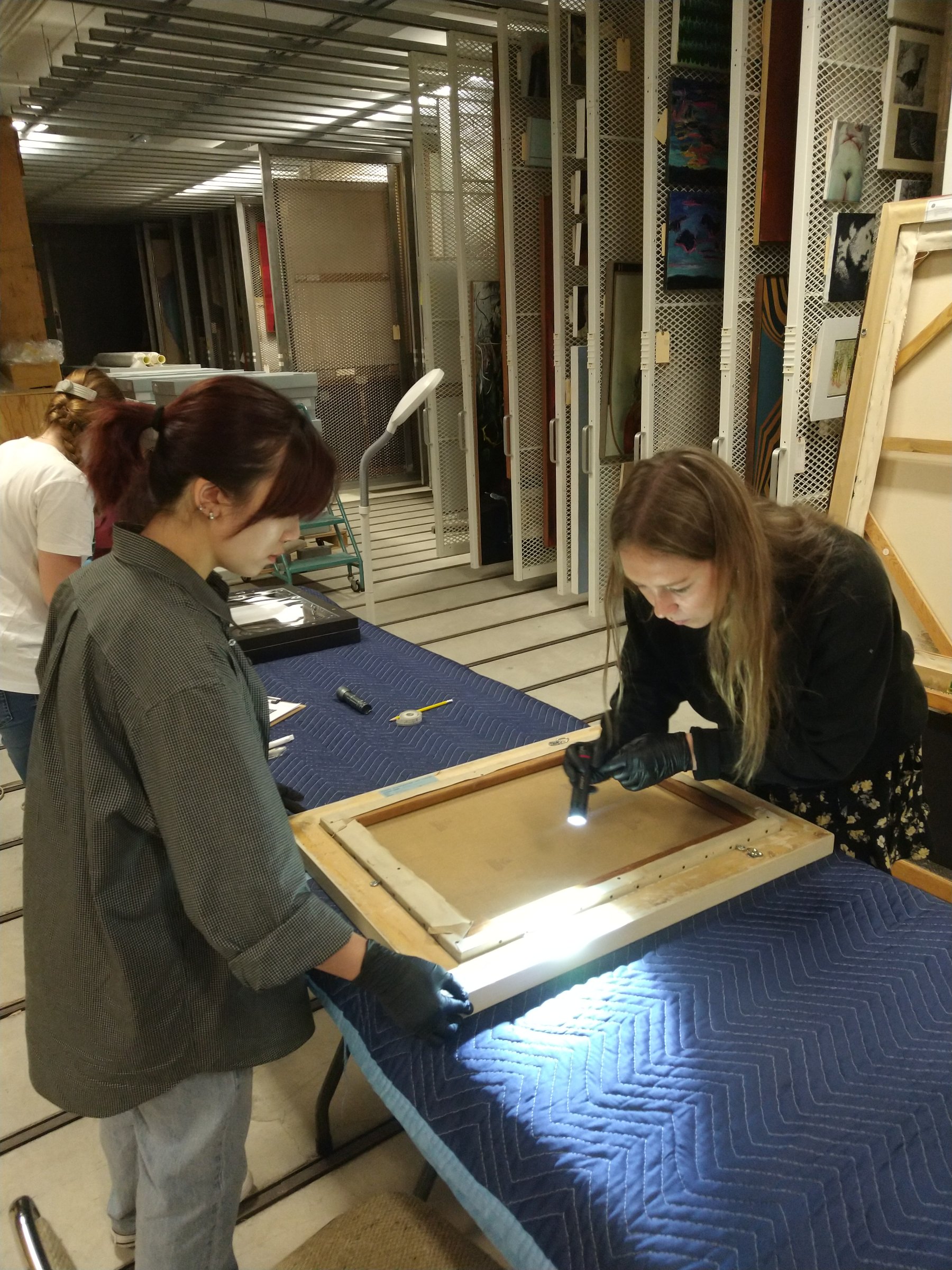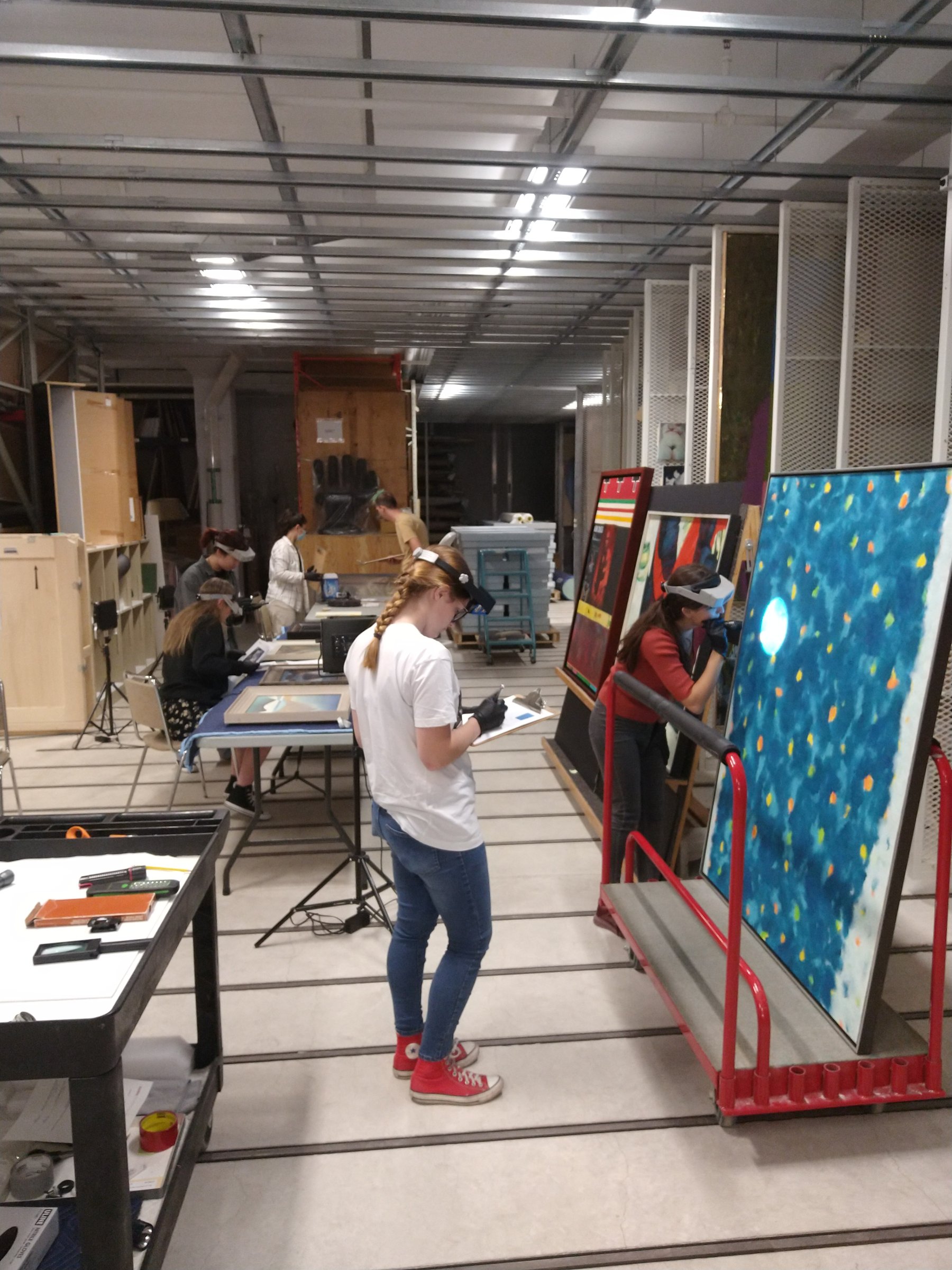Agnes’s collections team has been diligently packing the collection for long-term storage. All 17,000 works need to be moved off-site during the construction of Agnes Reimagined, the new future-oriented facility. Updated condition reports are an excellent tool for understanding the artwork’s transportation and off-site storage needs.
“The Master of Art Conservation (MAC) Program shares much more than the building with us,” says Gabriel Bevilacqua, Agnes’s Collections and Care Manager. “We are partners in our quest for the conservation of cultural heritage. Having one of North America’s leading conservation research and training centres so close to Agnes is a truly fantastic situation that very few museums can enjoy. When Professor Patricia Smithen offered help from her students, we gladly embraced this amazing opportunity to assist with our condition reporting needs.”
MAC students Justina Hoi-Nam Yu, Tailor Choquette, Andreea Nita, Sophie Morris, Doris Fuller Ruiz and Travis Zuidema were able to hone their condition reporting skills through experiential learning and hands-on training and simultaneously make big impact for Agnes’s Collection team. They finished condition reports for nine paintings.

MAC Students Justina Hoi-Nam Yu and Sophie Morris analyzing the back of a painting. Photo: Gabriel Bevilacqua

MAC Students condition reporting at Agnes. Photo: Gabriel Bevilacqua
First-year student Sophie Morris reflects on the experience, “When condition reporting, I am constantly reminded that each painting has had its own unique life, and we can learn a lot about its history just by getting close and taking a good look at it through this practice. Every painting has been through different events, exhibited in different spaces, handled by different people and stored in various ways and locations, all of which have a major impact on their condition.”
Morris brings her knowledge of painting conservation to bear by analyzing work and “looking for any areas of damage or vulnerability, such as dents, scratches, losses, cracks, flaking, abrasions or accretions on the surface. To do this, I use various tools such as an optivisor or magnifying glass, flashlight, measuring tape, camera, UV and diagrams or photographs of the painting.”
By carefully analyzing pieces and documenting any findings, these reports provide valuable information on how to best proceed with the painting’s care.